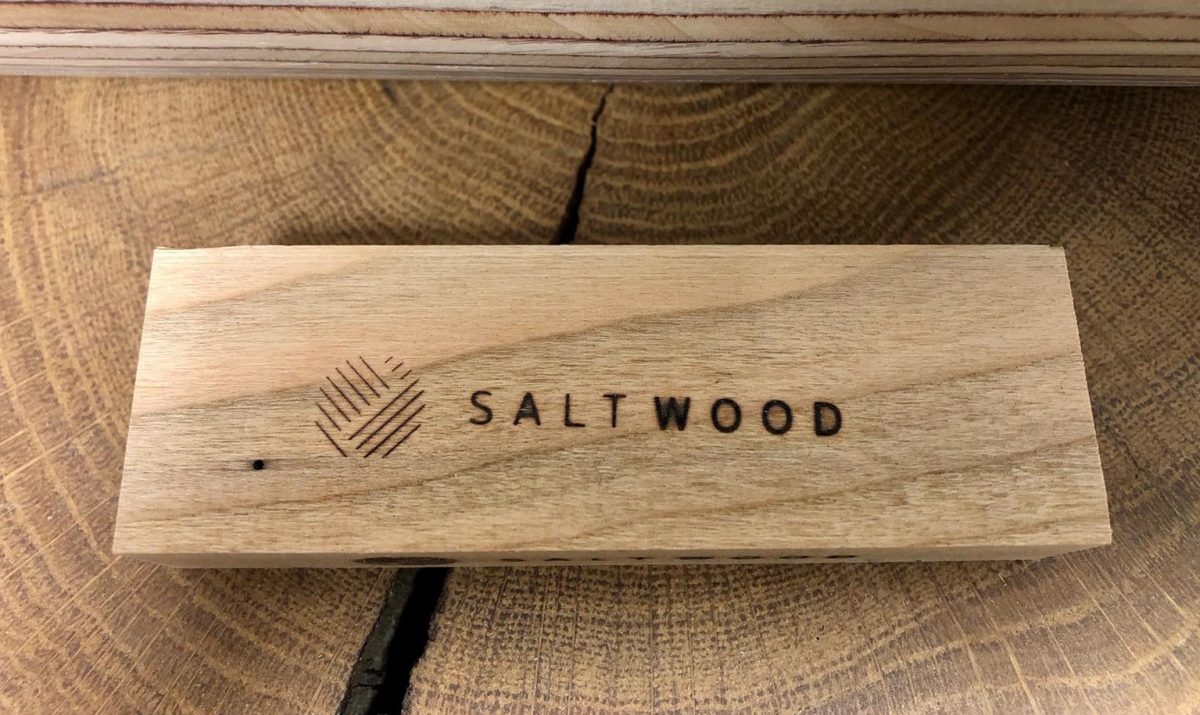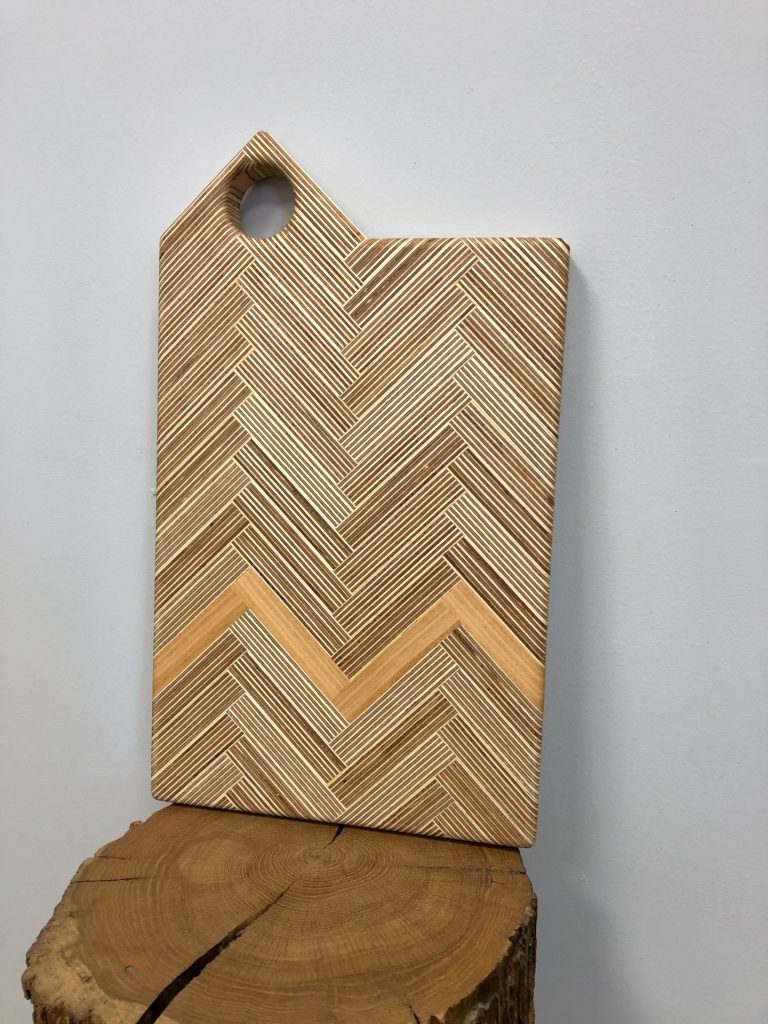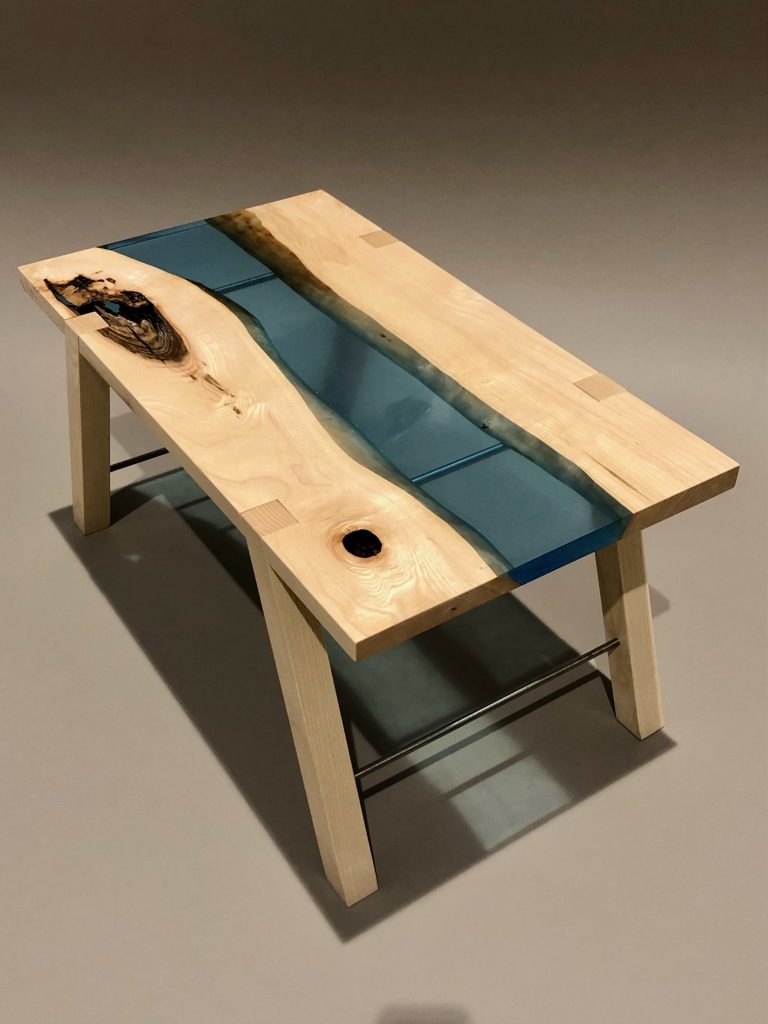This is a story about having some fun with scrum (agile hardware) and doing a start up with a friend.
But it’s also more than that. It’s another journey. It was setting out with a clear mission, ‘giving it a go’ and seeing what’s out there.
It was an experiment. This was about applying scrum, objectives and a radical focus, and seeing, well, will it work?
I wanted to know:
- Can we apply scrum to hardware? I know it’s been done, but can we do it?
- Will scrum work with a friend? Or will he roll his eyes, chuckle, and tell me ‘where I can go with that’?
- Can we even do a small start up on the side? We both work full time, have kids and do sport. After we’ve ‘burped the baby and mowed the lawn’, can we get anything done? And if so, how?
My hope here is to share a few things that I’ve learned in the past three months (yes only three months), share a few links, and share with you the joy that I experienced in this journey so far, so that you might think about something similar.
So, as with all good stories, this story starts with two characters in an unlikely situation. Craig and I had just emerged from the cold Atlantic water with our surfboards. It was a rough storm and we settled down next to the van to eat stew and drink beer.
If I remember I was relating what I had learned from recently reading the book, ‘Anti-fragile’, (by N Taleb) and how artisans are inherently anti-fragile (that is, exposed to small failures and constant stresses and thus successfully adapting by necessity), and I was pointing at Craig and telling him that he’s an artisan, thus anti-fragile. Craig pondered and showed me a picture of a coffee table he had recently experimented with. I took the phone greedily off him, and with my two thumbs, zoomed into the picture and said, ‘it’s beautiful’. He told me that it was made from offcuts, recycled from his other carpentry work.
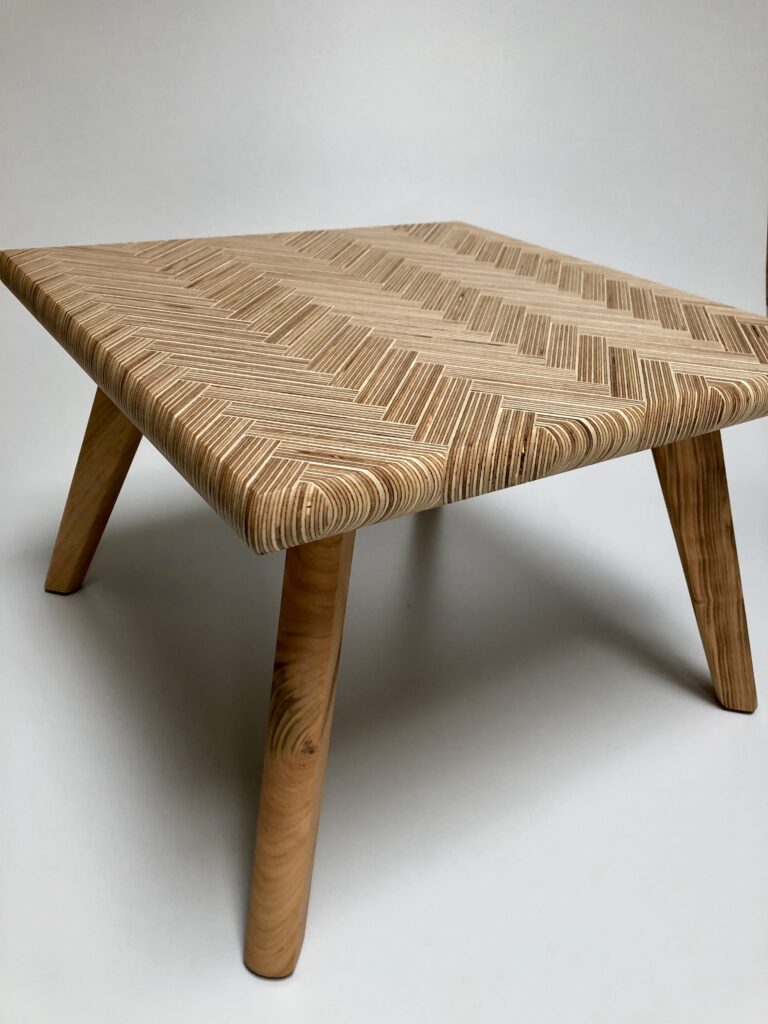
Being a full time carpenter (and trained yacht builder) he doesn’t have a lot of time to build furtniture – or boats! But maybe if we teamed up …
In a moment of inspiration, we figured we have a go at setting something up. But ‘setting something up’ still sounded a bit vague.
At that point, I said, you know, if we want to do this we need to do a proper project lift off. Proper ‘Diana Larsen-style’ lift off. So we did a project lift off. It was the first time I had done a lift off after some beers.
And it was one of the best lift offs ever!
Lift off!

Dressed in cut-off jeans, an unbuttoned shirt and backwards baseball cap, I might not look like I’m ready to start a project, but let me turn this around at you: What makes you think a project lift off would have been any better if we had worn suits and sat together in a room with no windows under fluorescent lighting, drinking nescafe? And yet that’s how many projects are conceived.
But there we were in the perfect setting, sat next to a fire under the stars, surrounded by cork trees and umbrella pines, with the sound of the ocean rolling in the background, drinking a beer, and dreaming about a project.
Within about three hours, we had clarified the customers, their problems, the outcomes we’re looking to achieve, the value we’re offering, our mission statement and how we were going to work together. I made the notes on my phone and I wrote it up a week later.
We set our vision: hand built art you can use with a smile.
This represented the values of:
- Beautiful and practical
- Sustainable and natural
- Infused with the spirit of the outdoors and the ocean!
All are values that we share and hold dearly.
After a bit of pondering. I proposed an objective:
‘Get into business by December 2020’
- Sell at least one product.
- Buyers love it so much that they cannot help but tell their friends.
- Selling platform in place.
With this single objective we are aiming to set up the business and test the market at the same time, hence the need to sell. Ultimately, the only real measure is selling. And anyway, if we can’t sell anything then we want to know asap, preferably within a few months – but we also want to give it a bloody good shot.
One sale doesn’t sound very ambitious but it’s only a first step, and it’s still a sufficiently big one within three months, especially if you consider the starting point was being sat next to fire with nothing but a beer and an idea. Think about how many people have told you about their idea and years later, it still hasn’t materialised. It’s not easy to set something up. And anyway, we were both perfectly aware of our own limited constraints. The objective was appropriate.
We weren’t specific about what exactly was the first thing to be sold. It wasn’t the table, as it turned out. But that’s where the agile hardware comes in. Every time we got some feedback, we said oh great, and put it onto the backlog to prioritize. The first feedback was, ‘oh my god, I want that as a mirror’. Two weeks later we had one. It would never have crossed our minds.
Another feedback was, ‘amazing, but I’m looking for something a bit bigger. I’d be happy to pay a bit more for it’. Four weeks later we had a bigger one (we needed two weeks to experiment with sizes). This is, of course, perfectly typical for artisans and craftsmen to work like this, hence being inherently anti-fragile: adaptive (and growing) to feedback and thousands of small changes and stresses. Stresses are information.
Objectives
Even when I told people what we were working towards, I would often hear, ‘you know what, go contact Fortnum and Mason, they’d love this. You just need one big contract with a major retailer, and you’d be sorted’.
That might be true, but firstly that wasn’t our goal and secondly, we still need to test whether anyone will even buy this first! Imagine the effort required, at this stage, to start emailing around a giant conglomerate looking for the procurement manager. That alone could take a year. We needed to focus our energy in these next three months to get the best information, and best chance, possible.
One comment I cherished was when someone said it’s interesting to see how you guys are staying so focussed on one objective. To have that audacity. And that’s the point. Without that clear objective there would be many potential other distractions leading us all over the place.
What I came to realise was that a good objective creates both an urgency and patience at the same time. It seems contradictory, but I felt a constant internal eagerness to get closer to the objective. At the same time, I didn’t feel rushed. I always knew that I was getting closer, knowing that things take time. As they say, grass doesn’t grow any faster by pulling at it.
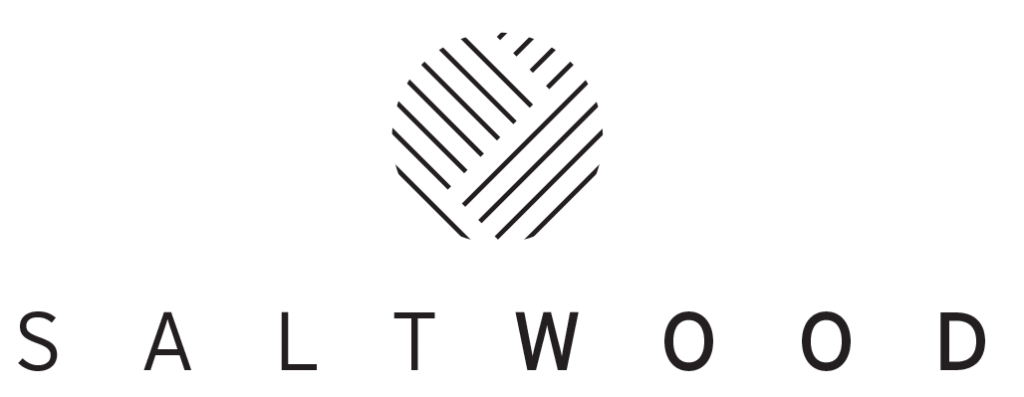
It took a few attempts to get the name and design that we were happy with. When we tested it, people liked the name and could remember it easily. The name evoked both driftwood and saltwater in their minds.
Proximitate Objective
It was a proximate objective. It was sufficiently ambitious, but we knew we could do it. We just had to figure out how and get on with it.
It was something that as a team of two, we could both achieve. We had all the necessary skills, and the way we work together would determine the rest.
Working with yer pal
So in the three months we had 6 sprints and delivered 5 products. Only one was planned ahead of time. The other four came from feedback.
One of my concerns was that Craig wouldn’t be interested in Scrum. He might think of it as something dumb that those stuffy, sandwich-eating, water-cooler-drinking managers do. He’d never heard of scrum and hadn’t yet encountered a need for it.
I explained that scrum is probably about 95% common sense, and I think that helped. I also recommended we ‘just give it a go’. If it’s not fun, we’ll scrap it and do whatever feels best.
To start with, we’d start by planning what we want to achieve in our sprint and then have a check in once a week and keep the communication channels open. We didn’t need much more than that for now.
My main concern was that our momentum would just peter out once the initial excitement had run out, which is what happens in a lot of projects. But I’m glad to say that Craig took to Scrum. It helped to have a backlog of small items of work, prioritizing them together, always with an eye on our objective, and sticking to a WIP score (maximum, two or three items per week).
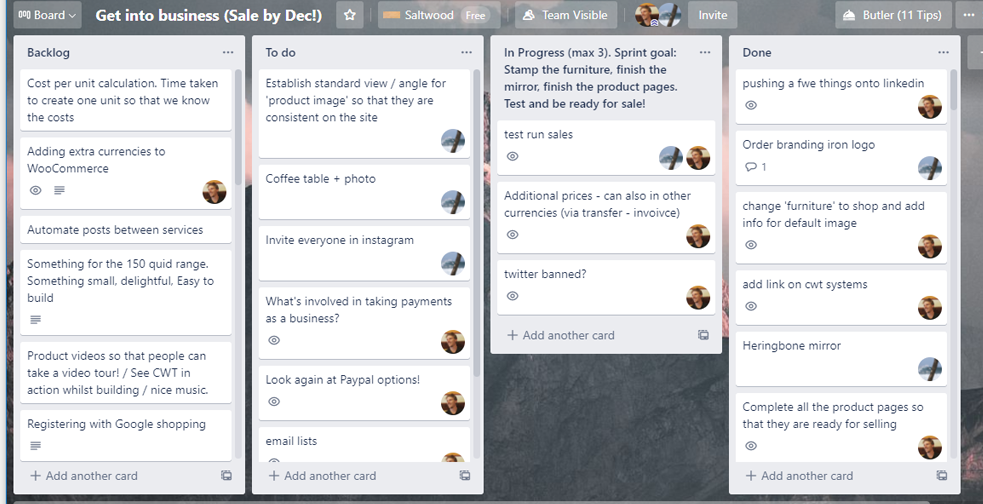
And that’s what I think kept us going steadily onwards towards our objective. Lift offs often evoke the image of a rocket or plane. In my eyes, after we had lifted off, it felt more like a train chugging along at a steady comfortable speed. Chugga chugga chugga.
We were on track apart from when Craig’s daughter wanted a chicken tractor. So the new coffee table design had to wait until the chicken tractor was finished. There was nothing we could do about that.
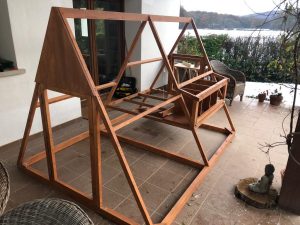
Did we achieve our objective?
Yes we achieved our objective. Of course, by some interpretations, it might be considered a fairly modest objective, but the scope of any objective is relative. In our case, it was still ambitious and we couldn’t have achieved any more in three months, given our circumstances. Ultimately, our constraints meant that we had no other option but to radically prioritize and focus only on activities that would pull us closer to our objective – and not one minute dedicated to anything else (apart from that bloddy chicken tractor)! The other indirect personal objective – to become more anti-fragile – is not yet achieved, but on course. So this is one of many elements making up that broader personal objective. Essentially, this project is a small bet with a potential upside. It was fairly low risk, with little financial investment required. It wasn’t a huge investment of time either. Perhaps a few hours per week, at most. The potential gain could one day be large and even scalable but to be honest, it’s perfectly okay if nothing comes out of it. It was a small bet and been immense fun so far – that’s the juice for us! – and we’ve only just started.
No doubt, we could have done the whole lot in two intense weeks, but the outcome would not have been the same – there wouldn’t have been sufficient time for feedback to get the ideas for these products nor would we have had the time to properly refine the design and vibe as it is now. And, that’s a great lesson / confirmation. By having constant immediate feedback, we were not only agile in the way we worked, but also increasingly anti-fragile by constitution.
What about the agile hardware?
We applied agile hardware in the sense that we applied scrum to a physical (non-digital) product. In fact, I was relating this story to agile consultant, Jon Spruce, and he said, oh why don’t you check out what Joe Justice is doing with agile hardware over at Tesla. So we watched that interview. It turns out they’ve built self-building factories and they have teams shipping a new rocket every week. Erm, we’re not quite there yet, I told Jon after listening to him interview Joe Justice, but we learned a lot from the video – particularly the line about ‘creative problems are human problems, everything else: automate’. We applied that to a few things. We have also continued to modify some of the original designs as we continue and are onto ‘version 2’ most of the items based on feedback and our own observations.
Does scrum work with mates?
Yes, the best thing about scrum is that it is simple yet sufficient – and evidently works great with mates. Every two weeks, we agreed what important stuff we were both doing and then supported each other – and held each other to account – to achieve a next goal, with sufficient jeering and mockery along the way so that we didn’t take ourselves too seriously. It had to be good fun, after all! Craig got a healthy dose of jeering when he tried to take the first stand-up from the pub – especially not if I’m sat at my desk! We had to nip that one in the bud! I got plenty of jeering when I couldn’t tell the difference between mahogany and cherry wood.
I think people are often a little bit tentative about going into business with friends, preferring not to risk the friendship. I know I am! It’s been a great working relationship so far. We were both enjoying the experience the whole time. And I like what Gunther Verheyen says that scrum is more about behaviours then process – and that’s a good reminder. Really we were setting up the right behaviours to work well together. Behaviours such as: Commitment, Focus, Openness, Respect, and Courage (all of scrum’s values) which are all completely compatible for working with friends.
Wrapping up and looking ahead
So, this has confirmed my experiment that doing a lift off, setting a clear objective and having a framework (like scrum) can really set the right environment to get the best out of each other. It also confirmed that we can do a ‘small bet’ in our own time – with only a few hours per week and over the course of three months, I think it’s quite incredible what can be achieved – something valuable and worthwhile. So, we’ll crack on with the next objective. But in the meantime, I’ll end with a few prompts for you:
- What can be better than doing something positive and constructive with some friends?
- What’s the best way of working with friends?
- Can we become more anti-fragile, and even work towards that in our spare time?
- What would be your first ‘small bet’?
Links / inspiration
Piet hein eek’s scrap wood furniture
Anti fragile – gaining from disorder

